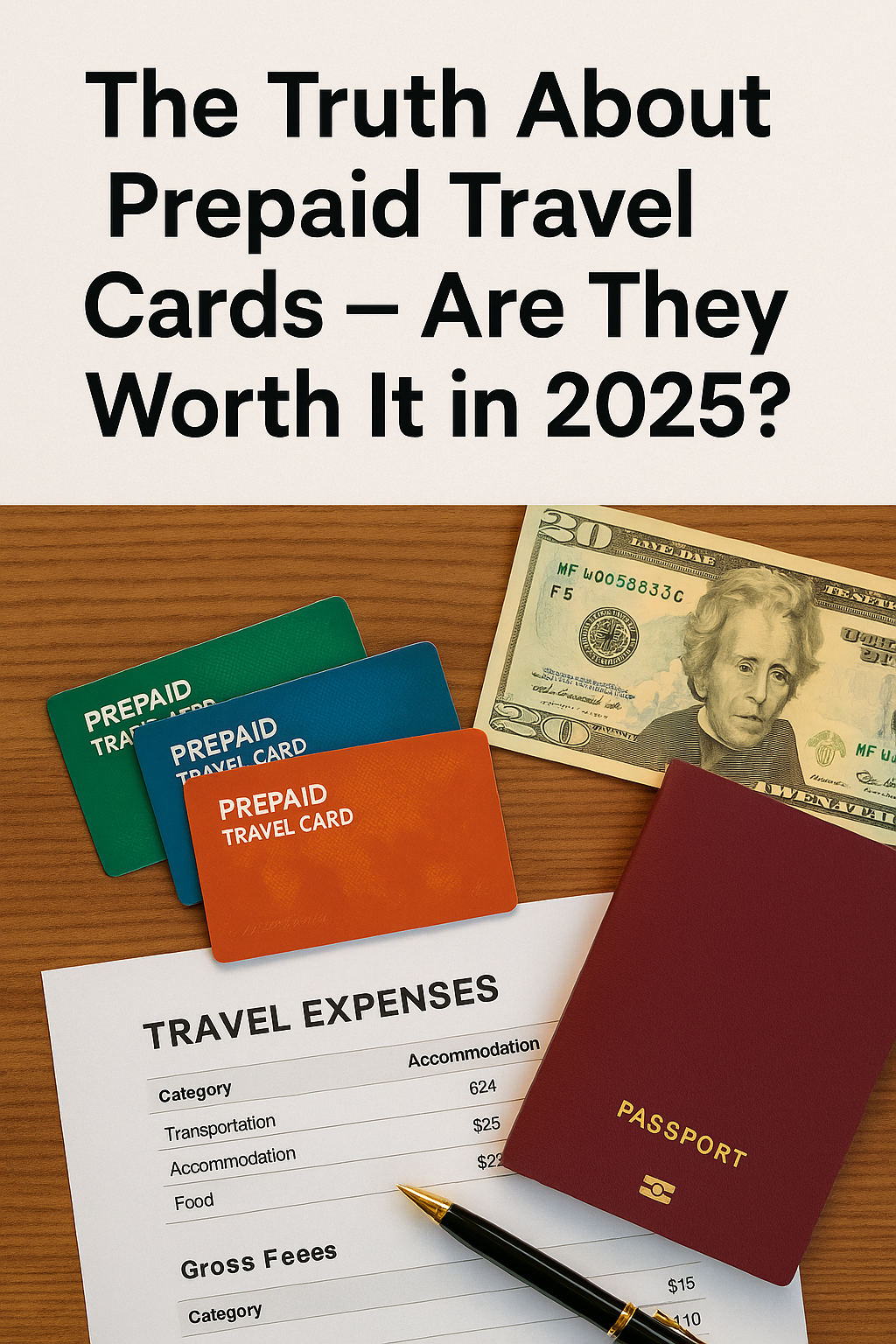Prepaid travel cards used to be the go-to solution for travelers who wanted a safer and more controlled way to spend abroad.
But in 2025, with the rise of mobile wallets, multi-currency accounts, and fintech apps, do they still make sense?
This article explores what prepaid travel cards really offer today, and whether they’re still a smart tool—or an outdated relic.
1. What Is a Prepaid Travel Card?
A prepaid travel card is a reloadable card (usually Visa or Mastercard branded) that allows you to:
- Load multiple currencies
- Lock in exchange rates ahead of your trip
- Spend abroad like a debit card
- Withdraw cash at international ATMs
Popular examples include:
- Travelex Money Card
- Revolut Prepaid Card (Basic Tier)
- Wise Card (Prepaid Hybrid)
- Monzo (UK)
- Cash Passport
2. Pros of Using a Prepaid Travel Card
FX Rate Lock-In
You can exchange and store money in advance at a favorable rate.
Safer Than Carrying Cash
If lost, the card can be blocked, and funds protected.
No Link to Your Main Bank Account
Reduces risk of fraud or identity theft.
Budget Control
You can only spend what you’ve loaded—perfect for travel budgeting.
3. The Drawbacks You Should Know
Reload Fees or Limits
Some cards charge up to $5 per reload or limit how often you can top up.
Inactivity Fees
If you don’t use the card for 12 months, you might be charged $3–$5/month.
Hidden FX Margins
Even with rate lock-in, many cards offer poor exchange rates compared to Wise or Revolut.
ATM Withdrawal Fees
$2–$5 per withdrawal is common, plus ATM owner fees.
Not Always Widely Accepted
Especially in developing countries, prepaid cards can be rejected by merchants.
4. Who Should Still Use Them?
- Teen or student travelers going abroad for the first time
- Parents sending spending money to children studying overseas
- Senior travelers who prefer fixed budgets and less tech
- Travelers going to high-risk areas who don’t want to carry cash or expose bank accounts
5. Better Alternatives in 2025
If you’re tech-savvy and want better value, consider:
| Alternative | Benefits |
|---|---|
| Wise Card | Real exchange rates, no monthly fees, app-based control |
| Revolut | Free FX up to limit, budgeting tools, virtual cards |
| Apple Pay + Multi-Currency Account | Works offline, auto-switch currency, biometric protection |
| N26 (EU) | Free withdrawals, great for EU-based travelers |
These options are more flexible, cheaper, and easier to manage than most prepaid cards.
6. Real-World Example
Emma – Student from Canada studying in Spain
- Parents preload her prepaid card in CAD
- She loses ~7% due to FX markups and ATM fees
- Switches to Wise + virtual card setup
- Saves $180 over 3 months
Final Verdict: Are They Worth It?
Prepaid travel cards may still be useful in limited cases,
but for most modern travelers in 2025, they’re:
- Too expensive
- Too inflexible
- Easily replaced by better tools
Unless you’re gifting travel money or setting fixed spending limits,
you’re likely better off with a fintech-powered, multi-currency solution.
Final Checklist
Consider prepaid cards only for beginners, students, or seniors
Always compare fees before choosing
Prefer cards that work with Apple/Google Pay
Use fintech tools for flexibility and real-time control
Avoid long-term storage of funds—use and unload quickly
